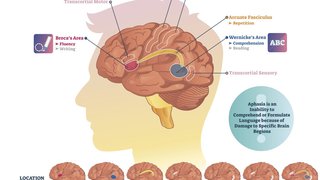‘I feel like I’ve been shot in the head’: Mother, daughter survive complex brain aneurysms
September 18, 2024

Vivian Ramirez Galvez had never experienced a headache like the one that caused her to faint at DFW International Airport in December 2022. “I don’t know what a gunshot feels like,” she told her mother, Susana Galvez. “But I feel like I’ve been shot in the head.”
The next day, Vivian’s primary care doctor said it was possible her headache resulted from the after effects of a new COVID-19 strain she recently had. But five days later, her pain was so intense she was having difficulty standing. So Vivian went to a hospital emergency room.
That’s where a magnetic resonance imaging (MRI) exam revealed a life-threatening complex ruptured aneurysm near the base of Vivian’s skull measuring about 2 centimeters (cm). Doctors in the ER contacted Texas Health Dallas (THD), where she was scheduled for lifesaving surgery the next day with UT Southwestern neurosurgeon Rafael De Oliveira Sillero, M.D. The surgery took place at the UTSW Neurosurgery and Spine Center at THD, one of the leading facilities in Texas for treating this type of aneurysm.
Vivian, now 36, is among the 0.01% of Americans who suffer ruptured brain aneurysms each year. Dr. Sillero said only about half of those patients survive.
Seven months later, after being screened, Vivian’s mother also was diagnosed with a brain aneurysm, although hers had not ruptured. Thanks to highly specialized and patient-tailored endovascular surgical treatments by Dr. Sillero and his UTSW team, the two patients not only survived, but made full recoveries.
Their stories shed light on a less understood but highly consequential factor involving aneurysms: family history. Having immediate relatives who’ve had a brain aneurysm can increase the risk up to four times that of the general population.
What is a complex brain aneurysm?
Brain aneurysms develop when a weak spot on an artery in the brain bulges and fills with blood. They are primarily classified by type – including saccular, fusiform, and mycotic aneurysms – and size: small (less than 1.1 cm), large (1.1-2.5 cm), and giant (more than 2.5 cm). While small brain aneurysms do not rupture as often, the complexity of the aneurysm sharply increases the chance of rupture, affecting treatment options and risk of death.

“The complexity varies depending on many factors,” Dr. Sillero explained. “When they’re large or giant, it becomes more complex. When they’re very close to the bone, as was the case for both of these patients, it becomes more complex and also difficult to do open surgery.”
The most common symptom for ruptures is a severe headache that patients often describe as the worst of their life. Other symptoms include nausea, vomiting, drowsiness, stiff neck, and in rare cases, seizure. Based on these symptoms, patients are assessed on a scale that reflects their severity from 1 to 5, with 5 indicating the most severe symptoms, including coma.
In Vivian’s case, despite the many factors that made hers more complex, she presented with a low grade of neurological symptoms and was lucid before surgery. This, too, helped shape her treatment plan and outlook.
Understanding aneurysms: The causes, symptoms, and severity
What are the risk factors?
Women, older patients, cigarette smokers, drug users, and heavy drinkers have a higher risk of developing brain aneurysms. Conditions such as high blood pressure, polycystic kidney disease, atherosclerosis, certain blood infections and connective tissue disorders, and congenital heart conditions also increase risk, UT Southwestern experts say, as does a prior ruptured aneurysm, making screening and prevention critically important.
Family history would have to be considered in the case of Vivian and Susana, despite the fact that there’s not much data or an empirical study involving familial aneurysms, Dr. Sillero said. An anatomical vulnerability potentially associated with familial aneurysms may mean riskier outcomes for patients with this type.
“We tend to see that the familial type has more risk for the rupture because we believe the blood vessel wall is thinner,” he said.

Despite this increased risk, however, the familial element of Vivian’s case likely saved her mother’s life. “When he mentioned family history as a possible cause, we realized immediately that I would need to be tested too,” recalled 57-year-old Susana, speaking in Spanish.
After an MRI revealed a smaller, unruptured aneurysm of the same type, in the same location, and the same kind of vessel as her daughter’s, Susana was immediately booked for surgery. “My daughter cried to me when she found out,” Susana said. “She didn’t want me to go through the pain she’d been through.”
But as both mother and daughter found out, their treatment and recovery experiences would be extremely different, highlighting the tremendous importance of prevention and how it can improve patient outcomes.
Treatment options – what’s currently available?
There are two primary types of treatment for brain aneurysms: open surgery, or aneurysm “clipping,” and endovascular surgery. Because the location of the aneurysms in these patients made open surgery more difficult, both underwent less invasive endovascular surgery.
Open surgery involves making a small opening in the patient’s skull (a craniotomy). For endovascular treatment, the surgeon uses a peripheral artery to pass a catheter into the brain’s circulation and reach the aneurysm.
“With this device we call a flow diverter, you place a stent inside the vessel and this remodels the vessel. Then after three to six months, the aneurysm disappears because the vessel has healed,” Dr. Sillero explained.
The third-generation stent used by Dr. Sillero features a surface modification that also reduces the risk for thrombogenicity, or clot formation. The complexity of Vivian’s aneurysm, however, required an additional surgical technique.
“They were both endovascular, but the first patient required a coil and the flow diverter because she had a large aneurysm and there was a rupture. Her mother had a smaller aneurysm, and she did not have a rupture. So for that one, only the flow diverter would suffice,” Dr. Sillero said.
Using the coiling technique, or endovascular embolization, surgeons place a coil device into the aneurysm to induce clotting within the aneurysm and block off additional blood flow. For both patients, the use of blood thinners was a critical piece of their post-surgery treatment to prevent stent thrombosis, or clot formation inside the stent.
RELATED STORY: Saved by the video call: When an aneurysm struck during a Teams meeting
Coiling technique
Different roads to recovery

Although daughter and mother both underwent less invasive endovascular surgeries without major complications, Vivian’s rupture led to stark differences in their recovery.
“For Vivian, we fixed the aneurysm, but then you also have to deal with the blood,” Dr. Sillero said. “She had subarachnoid blood, which can cause complications during the acute phase like vasospasm (sudden constriction of a blood vessel), which we see in about 30% of cases. This can lead to hydrocephalus (fluid buildup). The bleed outside of the vessel also irritates the brain and can cause inflammation. So, because of the rupture, she was in the hospital for several weeks.”
After her surgery, Vivian spent three weeks in the hospital being monitored. She required the assistance of a walker for two weeks after being released and continued to suffer from severe chronic headaches for several months. After approximately six months, her pain subsided, and she achieved a full recovery.
Despite the grueling process, the long odds swung in her favor.
“Of the 50% of patients with a ruptured brain aneurysm who survive, only about a third recover completely,” Dr. Sillero said.
Susana, having found her aneurysm much earlier because of her prevention screening, avoided a rupture and was back home 24 hours after surgery. She did not experience severe pain or headaches at any point in her recovery.
Expertise at UTSW Neurosurgery and Spine Center
Key to both patients’ success stories is the unique expertise at UTSW for treating brain aneurysms. As Dr. Sillero explained, this offers patients the opportunity to get tailored treatment all in one place.
"We are the only hospital [in North Texas] that has so many providers doing both techniques right now."
Rafael De Oliveira Sillero, M.D.
“I think we’re very unique for a couple of reasons. No. 1, we have a strong tradition – we have been doing this for a very long time. It’s in our DNA,” he said. “And we, as a group, have many doctors able to do both the clipping and endovascular procedures. We are the only hospital [in North Texas] that has so many providers doing both techniques right now.”
UT Southwestern physicians practice at Texas Health Dallas as part of the Southwestern Health Resources integrated network with Texas Health Resources.
Dr. Sillero is an Assistant Professor of Neurological Surgery and Radiology and is a member of the Peter O’Donnell Jr. Brain Institute at UTSW.
Dr. Sillero’s care partners include Babu Welch, M.D., Professor of Neurological Surgery and Radiology and a member of the O’Donnell Brain Institute; Jonathan White, M.D., Professor of Neurological Surgery and Radiology and a member of the O’Donnell Brain Institute; and Panagiotis Mastorakos, M.D., Ph.D., Assistant Professor of Neurological Surgery, Immunology and in the O’Donnell Brain Institute.
To make an appointment with the UT Southwestern Neurosurgery and Spine Center at Texas Health Dallas, call 214-645-2300 or request an appointment online.











